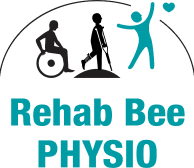Slip Disc Treatment
Slip Disc Treatment
Slip Disc Treatment: What is a Slip Disc and How is it Treated?
Your spine is one of the most remarkable structures in your body. It’s strong yet flexible, supporting your body’s weight while allowing you to bend, twist, and move freely every day. This remarkable design depends on small but crucial components — your intervertebral discs. The spinal disc acts as a shock absorber and provides flexibility to the spine. A slipped disc occurs when the structure of the disc is compromised, often due to injury or degeneration, leading to the inner material pushing out through the outer layer.
A slipped disc — sometimes called a slip disc, slipdisc, herniated disc, or herniated disk — happens when one of these discs becomes damaged. Imagine your spinal discs like little cushion pads or jelly doughnuts between your vertebrae. Each disc has a tough outer shell (the annulus fibrosus) that holds in a softer, gel-like centre (the nucleus pulposus). The tough outer ring provides strength and containment, helping the disc withstand compression and preventing herniation. When the outer layer weakens or tears, some of the inner material can push out, pressing on nearby nerves. Herniated discs are a common result of this damage and can cause pain, numbness, or weakness depending on the affected nerves.
Despite the name, discs don’t literally “slip” out of place. Instead, they bulge, herniate, or even rupture — which can lead to significant slip disc pain, numbness, or weakness. A bulging disc is often considered an initial stage, where the disc’s outer fibers swell outward but the inner material remains contained, while more advanced stages include disc herniation and, eventually, a prolapsed disc where the nucleus pulposus protrudes through the weakened outer fibers.
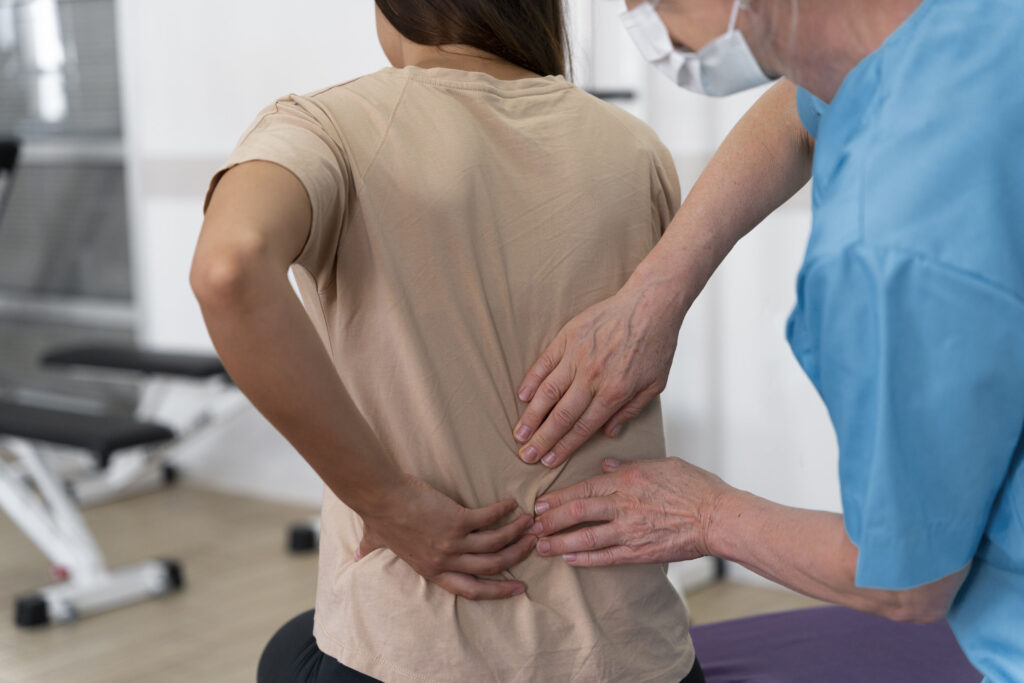
Slip Disc Treatment: What is a Slip Disc and How is it Treated?
Your spine is one of the most remarkable structures in your body. It’s strong yet flexible, supporting your body’s weight while allowing you to bend, twist, and move freely every day. This remarkable design depends on small but crucial components — your intervertebral discs. The spinal disc acts as a shock absorber and provides flexibility to the spine. A slipped disc occurs when the structure of the disc is compromised, often due to injury or degeneration, leading to the inner material pushing out through the outer layer.
A slipped disc — sometimes called a slip disc, slipdisc, herniated disc, or herniated disk — happens when one of these discs becomes damaged. Imagine your spinal discs like little cushion pads or jelly doughnuts between your vertebrae. Each disc has a tough outer shell (the annulus fibrosus) that holds in a softer, gel-like centre (the nucleus pulposus). The tough outer ring provides strength and containment, helping the disc withstand compression and preventing herniation. When the outer layer weakens or tears, some of the inner material can push out, pressing on nearby nerves. Herniated discs are a common result of this damage and can cause pain, numbness, or weakness depending on the affected nerves.
Despite the name, discs don’t literally “slip” out of place. Instead, they bulge, herniate, or even rupture — which can lead to significant slip disc pain, numbness, or weakness. A bulging disc is often considered an initial stage, where the disc’s outer fibers swell outward but the inner material remains contained, while more advanced stages include disc herniation and, eventually, a prolapsed disc where the nucleus pulposus protrudes through the weakened outer fibers.

Where Does It Usually Happen?
A slipped disc can occur anywhere along the spine but is most common in the lower back (lumbar spine) because this area bears most of your body’s weight and movement. Neck (cervical spine) discs can also herniate, causing shoulder or arm pain. Mid-back (thoracic spine) disc herniation is less common but can occur too, and imaging is often used to classify and diagnose these cases.
Where Does It Usually Happen?
A slipped disc can occur anywhere along the spine but is most common in the lower back (lumbar spine) because this area bears most of your body’s weight and movement. Neck (cervical spine) discs can also herniate, causing shoulder or arm pain. Mid-back (thoracic spine) disc herniation is less common but can occur too, and imaging is often used to classify and diagnose these cases.
Why It Matters
In Malaysia, many working adults experience slip disc symptoms, often triggered by heavy lifting, long hours at a desk, or poor posture. Left untreated, a slipped disc can lead to chronic pain and reduced mobility, affecting your work, family time, and quality of life.
The good news? Most people recover well with the right slip disc treatment, especially when diagnosed early. At Rehab Bee Physio, our caring team will help you understand what’s happening in your spine — and support you every step of the way to regain strength, comfort, and confidence.
Why It Matters
In Malaysia, many working adults experience slip disc symptoms, often triggered by heavy lifting, long hours at a desk, or poor posture. Left untreated, a slipped disc can lead to chronic pain and reduced mobility, affecting your work, family time, and quality of life.
The good news? Most people recover well with the right slip disc treatment, especially when diagnosed early. At Rehab Bee Physio, our caring team will help you understand what’s happening in your spine — and support you every step of the way to regain strength, comfort, and confidence.
Common Symptoms of a Slipped Disc
A slipped disc can show up in different ways, and no two people feel exactly the same. Some people might have intense, sharp pain that stops them in their tracks; others might notice only mild discomfort that slowly worsens over time. Recognising slip disc symptoms early is one of the best ways to prevent long-term problems and get effective slip disc treatment.
Localised Pain
You might feel a deep, constant ache in your lower back or neck. The pain can be sharp or burning, and may worsen when you move, bend, cough, or sneeze.
Radiating Pain
Many people with a slipped disc in the lower back experience sciatica — pain that travels from your lower back, through your hips and buttocks, and down one leg. If your slipped disc is in your neck, you may feel pain radiating into your shoulders, arms, or fingers.
Numbness or Tingling
This often happens in areas served by the compressed nerve. For example, your leg might feel “pins and needles” or parts of your arm might feel strangely numb.
Muscle Weakness
The affected muscles can lose strength, making it harder to lift, hold, or grip objects. Nearby muscles can also be affected, leading to additional weakness, discomfort, or mobility issues.
Pain That Worsens With Certain Movements
Everyday actions like getting out of bed, driving long distances, sitting for hours, or picking up your child may aggravate your slip disc pain.
When Slip Disc Symptoms Need Urgent Care
Most slipped discs improve with proper physiotherapy, rest, and lifestyle changes. But in rare cases, a severely herniated disc can compress nerves that control your bladder or bowels. If you notice:
- Sudden loss of bladder or bowel control
- Severe numbness in the inner thighs, buttocks, or groin area
seek medical help immediately. These are signs of a serious nerve condition called cauda equina syndrome, which needs urgent treatment.
Common Symptoms of a Slipped Disc
A slipped disc can show up in different ways, and no two people feel exactly the same. Some people might have intense, sharp pain that stops them in their tracks; others might notice only mild discomfort that slowly worsens over time. Recognising slip disc symptoms early is one of the best ways to prevent long-term problems and get effective slip disc treatment.
Localised Pain
You might feel a deep, constant ache in your lower back or neck. The pain can be sharp or burning, and may worsen when you move, bend, cough, or sneeze.
Radiating Pain
Many people with a slipped disc in the lower back experience sciatica — pain that travels from your lower back, through your hips and buttocks, and down one leg. If your slipped disc is in your neck, you may feel pain radiating into your shoulders, arms, or fingers.
Numbness or Tingling
This often happens in areas served by the compressed nerve. For example, your leg might feel “pins and needles” or parts of your arm might feel strangely numb.
Muscle Weakness
The affected muscles can lose strength, making it harder to lift, hold, or grip objects. Nearby muscles can also be affected, leading to additional weakness, discomfort, or mobility issues.
Pain That Worsens With Certain Movements
Everyday actions like getting out of bed, driving long distances, sitting for hours, or picking up your child may aggravate your slip disc pain.
When Slip Disc Symptoms Need Urgent Care
Most slipped discs improve with proper physiotherapy, rest, and lifestyle changes. But in rare cases, a severely herniated disc can compress nerves that control your bladder or bowels. If you notice:
- Sudden loss of bladder or bowel control
- Severe numbness in the inner thighs, buttocks, or groin area
seek medical help immediately. These are signs of a serious nerve condition called cauda equina syndrome, which needs urgent treatment.
What Really Causes a Slipped Disc?
When it comes to a slipped disc, there’s rarely just one cause. It usually happens because of a mix of age-related changes, everyday habits, and sudden injuries. Understanding what causes a slip disc can help you avoid movements or lifestyles that might put your spine at risk.
The Main Culprit: Disc Degeneration
As we age, our spinal discs naturally lose water content. A healthy disc is like a firm, bouncy cushion — but over time, it dries out, becoming less flexible and more prone to cracking or tearing. This wear-and-tear process is called disc degeneration, and it’s the number one reason people develop a slipdisc later in life.
Lifestyle and Daily Habits That Add Up
Your daily routines play a huge role in your spinal health. Here are some common causes that our patients at Rehab Bee Physio often don’t realise contribute to slip disc pain:
- Poor posture: Slouching at your desk, hunching over your phone, or sitting for hours without support puts uneven pressure on your discs.
- Lifting heavy objects incorrectly: Using your back instead of your legs to lift a box, suitcase, or even a child can cause sudden strain on the spine.
- Sudden trauma: A slip or fall, car accident, or sports injury can push a disc to rupture.
- Weak core muscles: If your abdominal and back muscles are weak, they can’t support your spine properly, leaving your discs to absorb all the shock.
- Being overweight: Carrying extra body weight, especially around the abdomen, puts additional stress on the lower back.
- Smoking: You might be surprised to learn that smoking reduces the oxygen supply to spinal discs, speeding up degeneration.
Genetic Factors
Some people are more prone to disc problems because of their genes. If you have a close family member who’s struggled with a slipped disc, your chances might be higher too.
What Really Causes a Slipped Disc?
When it comes to a slipped disc, there’s rarely just one cause. It usually happens because of a mix of age-related changes, everyday habits, and sudden injuries. Understanding what causes a slip disc can help you avoid movements or lifestyles that might put your spine at risk.
The Main Culprit: Disc Degeneration
As we age, our spinal discs naturally lose water content. A healthy disc is like a firm, bouncy cushion — but over time, it dries out, becoming less flexible and more prone to cracking or tearing. This wear-and-tear process is called disc degeneration, and it’s the number one reason people develop a slipdisc later in life.
Lifestyle and Daily Habits That Add Up
Your daily routines play a huge role in your spinal health. Here are some common causes that our patients at Rehab Bee Physio often don’t realise contribute to slip disc pain:
- Poor posture: Slouching at your desk, hunching over your phone, or sitting for hours without support puts uneven pressure on your discs.
- Lifting heavy objects incorrectly: Using your back instead of your legs to lift a box, suitcase, or even a child can cause sudden strain on the spine.
- Sudden trauma: A slip or fall, car accident, or sports injury can push a disc to rupture.
- Weak core muscles: If your abdominal and back muscles are weak, they can’t support your spine properly, leaving your discs to absorb all the shock.
- Being overweight: Carrying extra body weight, especially around the abdomen, puts additional stress on the lower back.
- Smoking: You might be surprised to learn that smoking reduces the oxygen supply to spinal discs, speeding up degeneration.
Genetic Factors
Some people are more prone to disc problems because of their genes. If you have a close family member who’s struggled with a slipped disc, your chances might be higher too.
Key Risk Factors for Having a Slipped Disc
Anyone can experience a slipped disc, but certain factors make it more likely. Understanding these risk factors helps you take practical steps to protect your spine and avoid the need for extensive slip disc treatment later on.
Age
People between the ages of 30 and 50 are most likely to develop a slipdisc. This is because your spinal discs naturally dry out and lose flexibility as you get older, making them more prone to tears and herniation.
Occupation
Your job plays a huge role in your spine’s health. Jobs that involve:
- Heavy lifting
- Repetitive bending and twisting
- Long hours of driving
- Prolonged sitting at a desk without proper posture
can all increase the strain on your spinal discs. Occupations such as Corporate Officers, Bankers, Accountants, and Consultants, especially those with long working hours and minimal movement are particularly prone to developing issues like slip disc due to prolonged spinal stress.
Sedentary Lifestyle
People who spend long periods sitting — especially with poor posture — have a higher risk of disc degeneration. Weak core muscles can’t support the spine well, so your discs take on more stress than they should.
Excess Weight
Being overweight puts additional pressure on the discs in your lower back. This constant stress can speed up disc wear and tear, leading to slip disc pain sooner.
Key Risk Factors for Having a Slipped Disc
Anyone can experience a slipped disc, but certain factors make it more likely. Understanding these risk factors helps you take practical steps to protect your spine and avoid the need for extensive slip disc treatment later on.
Age
People between the ages of 30 and 50 are most likely to develop a slipdisc. This is because your spinal discs naturally dry out and lose flexibility as you get older, making them more prone to tears and herniation.
Occupation
Your job plays a huge role in your spine’s health. Jobs that involve:
- Heavy lifting
- Repetitive bending and twisting
- Long hours of driving
- Prolonged sitting at a desk without proper posture
can all increase the strain on your spinal discs. Occupations such as Corporate Officers, Bankers, Accountants, and Consultants—especially those with long working hours and minimal movement—are particularly prone to developing issues like slip disc due to prolonged spinal stress.
Sedentary Lifestyle
People who spend long periods sitting — especially with poor posture — have a higher risk of disc degeneration. Weak core muscles can’t support the spine well, so your discs take on more stress than they should.
Excess Weight
Being overweight puts additional pressure on the discs in your lower back. This constant stress can speed up disc wear and tear, leading to slip disc pain sooner.
How Is a Slipped Disc Diagnosed?
When dealing with slip disc pain, getting a clear and accurate diagnosis is the first and most important step. Imaging, such as MRI, is used to classify disc herniation types and guide treatment. Magnetic resonance imaging allows detailed visualization of the spinal canal and spinal cord, helping to identify any compression or abnormalities that may affect the spinal cord or nerves. At Rehab Bee Physio, we believe in finding the root cause — so every slip disc treatment plan is tailored and effective, helping you avoid unnecessary pain and stress.
What to Expect During a Consultation
A proper diagnosis always begins with a thorough assessment:
1. Detailed Medical History
The team will start by asking key questions:
- When did the pain start?
- Where is the pain located?
- Does the pain radiate to other areas like the legs or arms?
- Are there movements or positions that make it better or worse?
- Any previous injuries, similar pain, or medical conditions?
All this helps build a clear picture of whether slip disc symptoms are the true cause of the discomfort.
2. Physical Examination
A careful physical exam checks:
- Posture: Looking for signs of misalignment, muscle tension, or compensation patterns.
- Range of motion: How easily and comfortably the spine and neck can move.
- Muscle strength and reflexes: Any weakness or unusual reflexes may show nerve involvement.
Special tests: Gentle tests like the Straight Leg Raise (SLR) or nerve tension checks help identify which nerve roots may be affected by a slipdisc.
Why a Proper Diagnosis Matters
It’s tempting to guess based on what you read online, but self-diagnosing a slipped disc can delay healing and lead to unnecessary treatments. A clear, evidence-based diagnosis means every treatment session targets what’s truly causing the pain — saving time and supporting a faster recovery.
At Rehab Bee Physio, the focus is always on helping patients understand their condition fully and move forward with confidence. Knowing exactly what’s happening inside the spine means there’s no room for fear — just a clear plan for safe, lasting relief.
How Is a Slipped Disc Diagnosed?
When dealing with slip disc pain, getting a clear and accurate diagnosis is the first and most important step. Imaging, such as MRI, is used to classify disc herniation types and guide treatment. Magnetic resonance imaging allows detailed visualization of the spinal canal and spinal cord, helping to identify any compression or abnormalities that may affect the spinal cord or nerves. At Rehab Bee Physio, we believe in finding the root cause — so every slip disc treatment plan is tailored and effective, helping you avoid unnecessary pain and stress.
What to Expect During a Consultation
A proper diagnosis always begins with a thorough assessment:
1. Detailed Medical History
The team will start by asking key questions:
- When did the pain start?
- Where is the pain located?
- Does the pain radiate to other areas like the legs or arms?
- Are there movements or positions that make it better or worse?
- Any previous injuries, similar pain, or medical conditions?
All this helps build a clear picture of whether slip disc symptoms are the true cause of the discomfort.
2. Physical Examination
A careful physical exam checks:
- Posture: Looking for signs of misalignment, muscle tension, or compensation patterns.
- Range of motion: How easily and comfortably the spine and neck can move.
- Muscle strength and reflexes: Any weakness or unusual reflexes may show nerve involvement.
Special tests: Gentle tests like the Straight Leg Raise (SLR) or nerve tension checks help identify which nerve roots may be affected by a slipdisc.
Why a Proper Diagnosis Matters
It’s tempting to guess based on what you read online, but self-diagnosing a slipped disc can delay healing and lead to unnecessary treatments. A clear, evidence-based diagnosis means every treatment session targets what’s truly causing the pain — saving time and supporting a faster recovery.
At Rehab Bee Physio, the focus is always on helping patients understand their condition fully and move forward with confidence. Knowing exactly what’s happening inside the spine means there’s no room for fear — just a clear plan for safe, lasting relief.
Proven Treatment Options for Slipped Disc Pain Relief
At Rehab Bee Physio, we know that dealing with slip disc pain can feel overwhelming — but you’re not alone. Most people with a slipped disc recover well without surgery when they get the right care, guidance, and support. During acute pain episodes, it is important to get sufficient rest to help manage symptoms and support recovery.
Our approach combines hands-on therapy, targeted exercises, and patient education to help you heal safely, stay active, and prevent future problems. Many patients notice improvement within a few weeks of starting appropriate non-surgical care. Physical therapy is a key non-surgical intervention that can improve mobility, reduce pain, and promote recovery.
Non-Surgical Slip Disc Treatment
Did you know that up to 90% of slipped disc cases improve with non-surgical treatment? Here’s how our physiotherapists help you manage pain and build lasting strength: Anti inflammatory medications, muscle relaxants, and nerve pain medications are often used to manage pain and inflammation. Doctors may also prescribe regular pain killers as part of a comprehensive pain management plan.
a. Pain Management Strategies
- Manual therapy: Gentle spinal mobilisations and soft tissue techniques to ease muscle tension and relieve pressure on nerves.
- Heat and ice therapy: Reduce inflammation and soothe aching areas.
- Electrical stimulation (TENS): Provides short-term pain relief and muscle relaxation.
- Lumbar Traction: We perform manual lumbar traction to improve the joint mobility and to decompress the joint space, which can give immediate relieve. This can only be performed by experienced physiotherapist in Rehab Bee Physio.
b. Personalised Exercise Therapy
- Core strengthening: Build stronger abdominal and back muscles to support your spine.
- Flexibility exercises: Improve the range of motion in tight muscles and joints.
- Nerve gliding techniques: Help reduce nerve irritation by gently moving the affected nerves.
Our therapists guide you step-by-step, adjusting your program as you heal — so you never feel alone in your recovery. A physical therapist plays a key role in designing and supervising personalized exercise programs tailored to your specific needs.
Posture and Ergonomics Coaching
Learning how to sit, stand, lift, and sleep properly can make a huge difference in your recovery. We’ll show you simple ways to improve your posture, whether you work at a desk, stand for long hours, or do physical tasks every day.
Lifestyle Advice and Education
Long-term relief means more than just treating pain — it means understanding your body:
- How to manage everyday movements safely
- Tips for staying active without worsening symptoms
- Simple changes to prevent flare-ups
Our goal is to empower you with the right habits to protect your spine for life.
Proven Treatment Options for Slipped Disc Pain Relief
At Rehab Bee Physio, we know that dealing with slip disc pain can feel overwhelming — but you’re not alone. Most people with a slipped disc recover well without surgery when they get the right care, guidance, and support. During acute pain episodes, it is important to get sufficient rest to help manage symptoms and support recovery.
Our approach combines hands-on therapy, targeted exercises, and patient education to help you heal safely, stay active, and prevent future problems. Many patients notice improvement within a few weeks of starting appropriate non-surgical care. Physical therapy is a key non-surgical intervention that can improve mobility, reduce pain, and promote recovery.
Non-Surgical Slip Disc Treatment
Did you know that up to 90% of slipped disc cases improve with non-surgical treatment? Here’s how our physiotherapists help you manage pain and build lasting strength: Anti inflammatory medications, muscle relaxants, and nerve pain medications are often used to manage pain and inflammation. Doctors may also prescribe regular pain killers as part of a comprehensive pain management plan.
a. Pain Management Strategies
- Manual therapy: Gentle spinal mobilisations and soft tissue techniques to ease muscle tension and relieve pressure on nerves.
- Heat and ice therapy: Reduce inflammation and soothe aching areas.
- Electrical stimulation (TENS): Provides short-term pain relief and muscle relaxation.
- Lumbar Traction: We perform manual lumbar traction to improve the joint mobility and to decompress the joint space, which can give immediate relieve. This can only be performed by experienced physiotherapist in Rehab Bee Physio.
b. Personalised Exercise Therapy
- Core strengthening: Build stronger abdominal and back muscles to support your spine.
- Flexibility exercises: Improve the range of motion in tight muscles and joints.
- Nerve gliding techniques: Help reduce nerve irritation by gently moving the affected nerves.
Our therapists guide you step-by-step, adjusting your program as you heal — so you never feel alone in your recovery. A physical therapist plays a key role in designing and supervising personalized exercise programs tailored to your specific needs.
Posture and Ergonomics Coaching
Learning how to sit, stand, lift, and sleep properly can make a huge difference in your recovery. We’ll show you simple ways to improve your posture, whether you work at a desk, stand for long hours, or do physical tasks every day.
Lifestyle Advice and Education
Long-term relief means more than just treating pain — it means understanding your body:
- How to manage everyday movements safely
- Tips for staying active without worsening symptoms
- Simple changes to prevent flare-ups
Our goal is to empower you with the right habits to protect your spine for life.
Simple Tips to Prevent Slipped Disc Problems
We believe that preventing a slip disc is always better than treating one. The good news is, protecting your spine doesn’t require complicated routines — just a few daily habits can make a big difference.
Whether you’re working at a desk, lifting things at home, or staying active with your family, these practical tips can help you avoid slip disc pain in the future.
Keep Your Spine Strong and Flexible
- Do gentle exercises that strengthen your core and back muscles. A strong core acts like a natural support belt for your spine.
- Stretch regularly to maintain flexibility in your hips, hamstrings, and back.
- Choose activities that are low-impact but effective, like walking, swimming, or yoga.
Practice Good Posture Daily
- Sit with your back supported and feet flat on the floor. Avoid slumping over your desk or leaning forward while looking at your phone.
- When standing for long periods, keep your weight balanced on both feet.
- Use ergonomic furniture if you spend hours working at a desk.
Lift and Carry Things Safely
- Always bend your knees and use your legs when lifting heavy objects — never bend at your waist.
- Hold items close to your body to reduce strain on your spine.
- Avoid twisting while carrying weight — pivot with your feet instead.
Maintain a Healthy Body Weight
Extra weight, especially around your belly, puts more pressure on the discs in your lower back. Keeping your weight within a healthy range reduces this stress and lowers your risk of developing slip disc symptoms.
Quit Smoking
Smoking can speed up disc degeneration by reducing oxygen flow to your spinal discs. Quitting not only helps your spine but also improves your overall health.
Listen to Your Body
- Pay attention to early signs of back discomfort.
- If you feel mild slip disc symptoms, don’t ignore them — get advice early.
- Early treatment prevents small problems from turning into major pain.
Simple Tips to Prevent Slipped Disc Problems
We believe that preventing a slip disc is always better than treating one. The good news is, protecting your spine doesn’t require complicated routines — just a few daily habits can make a big difference.
Whether you’re working at a desk, lifting things at home, or staying active with your family, these practical tips can help you avoid slip disc pain in the future.
Keep Your Spine Strong and Flexible
- Do gentle exercises that strengthen your core and back muscles. A strong core acts like a natural support belt for your spine.
- Stretch regularly to maintain flexibility in your hips, hamstrings, and back.
- Choose activities that are low-impact but effective, like walking, swimming, or yoga.
Practice Good Posture Daily
- Sit with your back supported and feet flat on the floor. Avoid slumping over your desk or leaning forward while looking at your phone.
- When standing for long periods, keep your weight balanced on both feet.
- Use ergonomic furniture if you spend hours working at a desk.
Lift and Carry Things Safely
- Always bend your knees and use your legs when lifting heavy objects — never bend at your waist.
- Hold items close to your body to reduce strain on your spine.
- Avoid twisting while carrying weight — pivot with your feet instead.
Maintain a Healthy Body Weight
Extra weight, especially around your belly, puts more pressure on the discs in your lower back. Keeping your weight within a healthy range reduces this stress and lowers your risk of developing slip disc symptoms.
Quit Smoking
Smoking can speed up disc degeneration by reducing oxygen flow to your spinal discs. Quitting not only helps your spine but also improves your overall health.
Listen to Your Body
- Pay attention to early signs of back discomfort.
- If you feel mild slip disc symptoms, don’t ignore them — get advice early.
- Early treatment prevents small problems from turning into major pain.
Why Rehab Bee Physio?
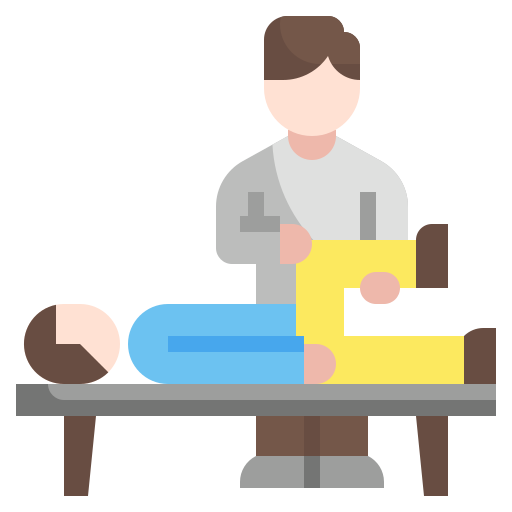
Highly Specialised Team by Areas

Covered by Insurance & Corporate Panels

Highly Certified Team
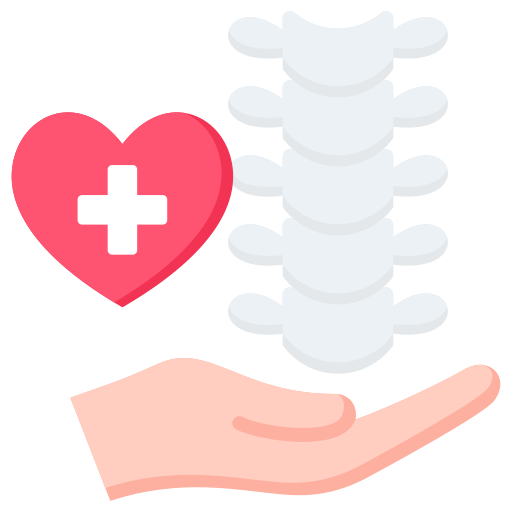
Treatment That Fits You
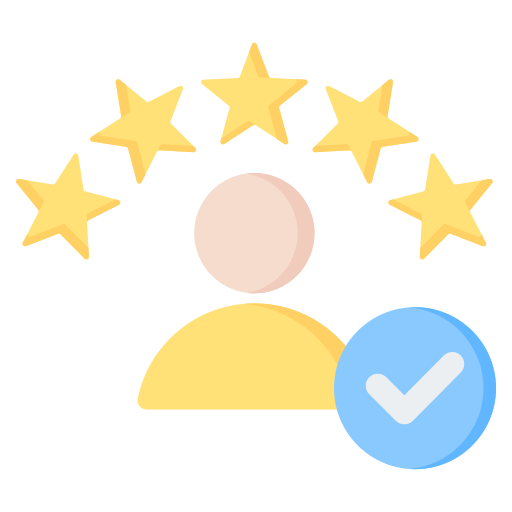
Trusted with 5 Star Google Reviews

Trusted by Media & University
Why Rehab Bee Physio?

Highly Specialised Team by Areas

Covered by Insurance & Corporate Panels

Trusted by Media & University

Treatment That Fits You

Highly Certified Team

